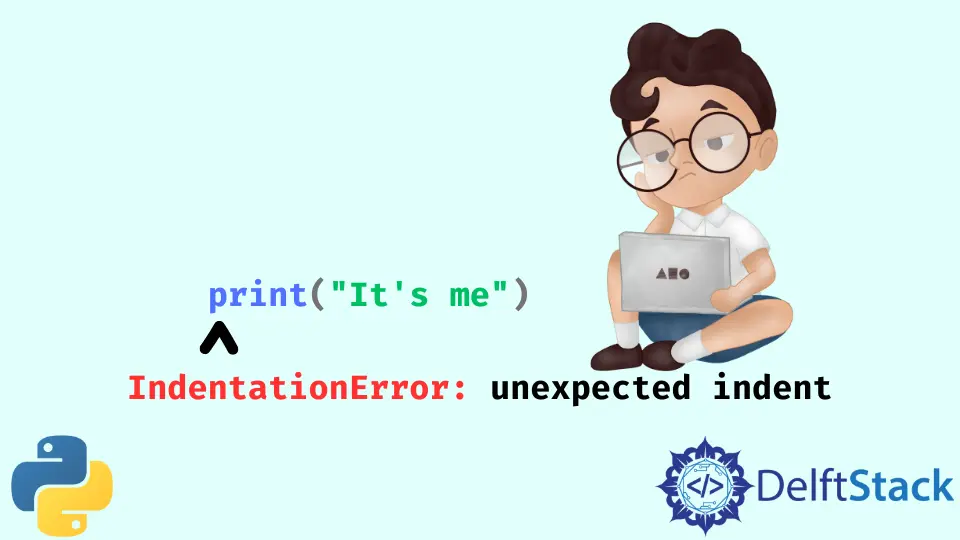糾正 Python 中意外縮排錯誤
Vaibhhav Khetarpal
2023年10月10日

Python 是一種非常依賴間距的程式語言。在 Python 中,適當的間距和縮排對於程式正常執行至關重要。Python 中的間距或縮排表示程式碼塊。
在本文中,你將學習如何糾正 Python 中的意外縮排錯誤。
糾正 Python 中的 IndentationError: unexpected indent 錯誤
當我們在程式碼塊的一行中新增不必要的空格或製表符時,會發生意外的縮排。如果你的程式中包含此類錯誤,則在我們執行程式碼時會顯示訊息 IndentationError: unexpected indent。
下面的程式碼顯示了發生意外縮排錯誤時的示例。
def ex1():
print("Hello Internet")
print("It's me")
ex1()
輸出:
File "<string>", line 3
print("It's me")
^
IndentationError: unexpected indent
在上面的示例程式碼中,我們定義了一個函式 ex1(),其中包含兩個 print 語句。但是,第二個 print 語句前面有一個不必要的空格或製表符。
此程式碼在第 3 行中產生 意外縮排 錯誤,因為它在 print("It's me") 語句之前遇到了額外的空間。
下面的程式碼糾正了前面程式中包含的錯誤。
def ex1():
print("Hello Internet")
print("It's me")
ex1()
輸出:
Hello Internet
It's me
Python 是一種嚴格執行縮排的程式語言。縮排還增加了程式碼的可讀性。
縮排可以在 Python 中使用空格或 tab 按鈕完成;選擇哪一個完全取決於使用者。Python 程式碼在某些情況下需要縮排,其中一部分程式碼需要寫在一個塊中。
在某些情況下,我們需要使用縮排,如果不這樣做,可能會出現意外的縮排錯誤:
if-else條件語句for或while迴圈- 一個簡單的
函式語句 - 一個
try...except宣告
Vaibhhav is an IT professional who has a strong-hold in Python programming and various projects under his belt. He has an eagerness to discover new things and is a quick learner.
LinkedIn